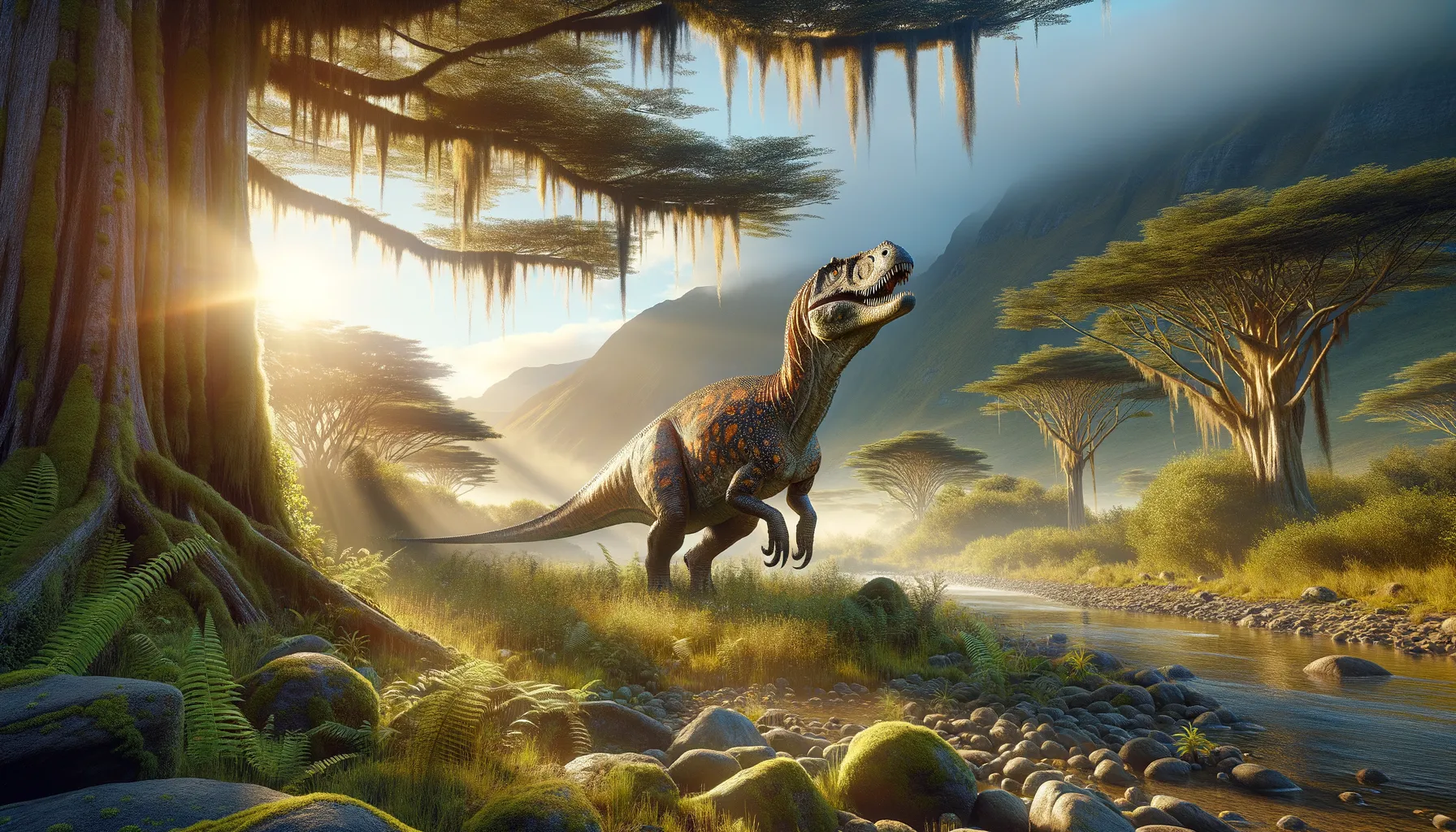
Riojasuchus
A Triassic predator with lasting legacy.
Period
Triassic
Length
Roughly 10 feet from nose to tail.
Height
About 3 feet tall at the hips.
Weight
Approximately 50 to 150 kilograms.
Riojasuchus was a medium-sized archosaur from the Triassic period, known for its role in the early evolution of crocodile-like reptiles. Despite its smaller size compared to larger contemporaries, it played a significant role in the ecosystem as a terrestrial predator. Living in what is now South America, it provides crucial insights into the diversification of early archosaurs.
Diet
Riojasuchus was likely a carnivore, feeding on smaller vertebrates and possibly insects. Its teeth and jaw structure suggest it was adapted to a meat-based diet.
Hunting
As a predator, Riojasuchus likely relied on stealth to ambush prey. It may have hunted alone or in small groups, taking advantage of its moderate speed to capture quick prey.
Environmental challenges
Living in the Triassic era, Riojasuchus faced fluctuating climates and changing landscapes. Droughts and competition for resources were common, requiring it to adapt to various environmental stressors. The evolution of larger predators also posed a significant challenge, necessitating strategic adaptations for survival.
Speed
Moderate speed for a mid-sized predator.
Lifespan
Around 20 to 30 years.
First discovery
Discovered in Argentina during the late 20th century.
Fun Facts
- Riojasuchus lived during the Late Triassic period around 225 million years ago.
- Despite its name, Riojasuchus is not a dinosaur but rather a prehistoric reptile closely related to crocodiles.
- This reptile was small, about the size of a large dog, reaching lengths of around 6.5 feet (2 meters).
- Riojasuchus had a unique body structure with a wide skull and short front legs, suggesting it was a ground-dwelling predator.
- Fossils of Riojasuchus have been discovered in Argentina, giving insight into the prehistoric ecosystems of South America.
- The name Riojasuchus means 'crocodile from La Rioja', named after the region where it was found.
- Unlike modern crocodiles, Riojasuchus had teeth that were more suited for shearing rather than crushing, indicating a varied diet.
Growth and Development
As a reptile, Riojasuchus experienced gradual growth through periodic shedding of its skin. Juveniles likely grew rapidly to reach suitable sizes to fend off predators. Over time, these growth patterns might have been influenced by environmental conditions and resource availability.
Habitat
Riojasuchus lived in the semi-arid regions of what is now Argentina. Its habitat featured a mix of river valleys and dry plains, providing diverse resources for survival. It was well-adapted to terrestrial life, relying on its environment for shelter and food sources.
Interaction with other species
Riojasuchus may have encountered various other species, including early dinosaurs and synapsids. These interactions likely ranged from competitive to predatory, depending on the circumstances and resource availability. Its social behavior may have included occasional cooperation or conflict with fellow Riojasuchus.
Natural lifespan
In natural settings, Riojasuchus lived approximately 20 to 30 years.
Reproduction
Riojasuchus likely laid eggs, similar to modern reptiles, with nesting habits in safe, secluded areas. Parental care might have been minimal, with hatchlings needing to fend for themselves shortly after birth.
Social behaviour
While specific social behaviors are largely speculative, Riojasuchus may have exhibited solitary or loosely organized packs. Such social structures could have been dependent on environmental conditions and resource availability.
Fossil locations
Fossils of Riojasuchus have primarily been unearthed in Argentina's La Rioja Province. These discoveries have provided insights into its anatomy and ecological role during the Triassic period, offering valuable context for early archosaur evolution.
